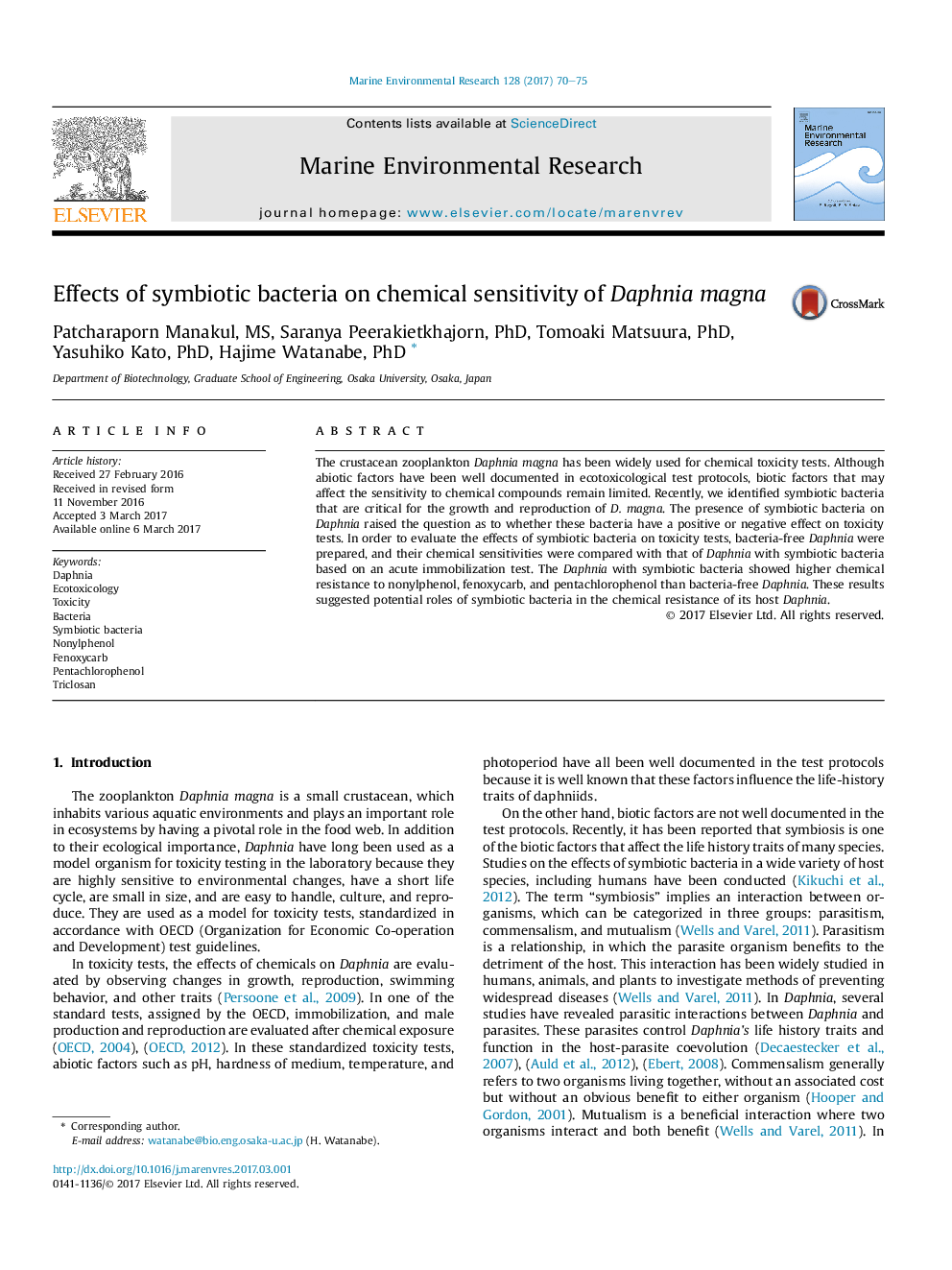| Article ID | Journal | Published Year | Pages | File Type |
|---|---|---|---|---|
| 5766277 | Marine Environmental Research | 2017 | 6 Pages |
â¢An optimal protocol for sterilization of Daphnia was established.â¢Symbiotic bacteria contribute to chemical resistance in Daphnia.â¢The toxic effect of triclosan was the same in bacteria-free and normal daphniids.
The crustacean zooplankton Daphnia magna has been widely used for chemical toxicity tests. Although abiotic factors have been well documented in ecotoxicological test protocols, biotic factors that may affect the sensitivity to chemical compounds remain limited. Recently, we identified symbiotic bacteria that are critical for the growth and reproduction of D. magna. The presence of symbiotic bacteria on Daphnia raised the question as to whether these bacteria have a positive or negative effect on toxicity tests. In order to evaluate the effects of symbiotic bacteria on toxicity tests, bacteria-free Daphnia were prepared, and their chemical sensitivities were compared with that of Daphnia with symbiotic bacteria based on an acute immobilization test. The Daphnia with symbiotic bacteria showed higher chemical resistance to nonylphenol, fenoxycarb, and pentachlorophenol than bacteria-free Daphnia. These results suggested potential roles of symbiotic bacteria in the chemical resistance of its host Daphnia.
